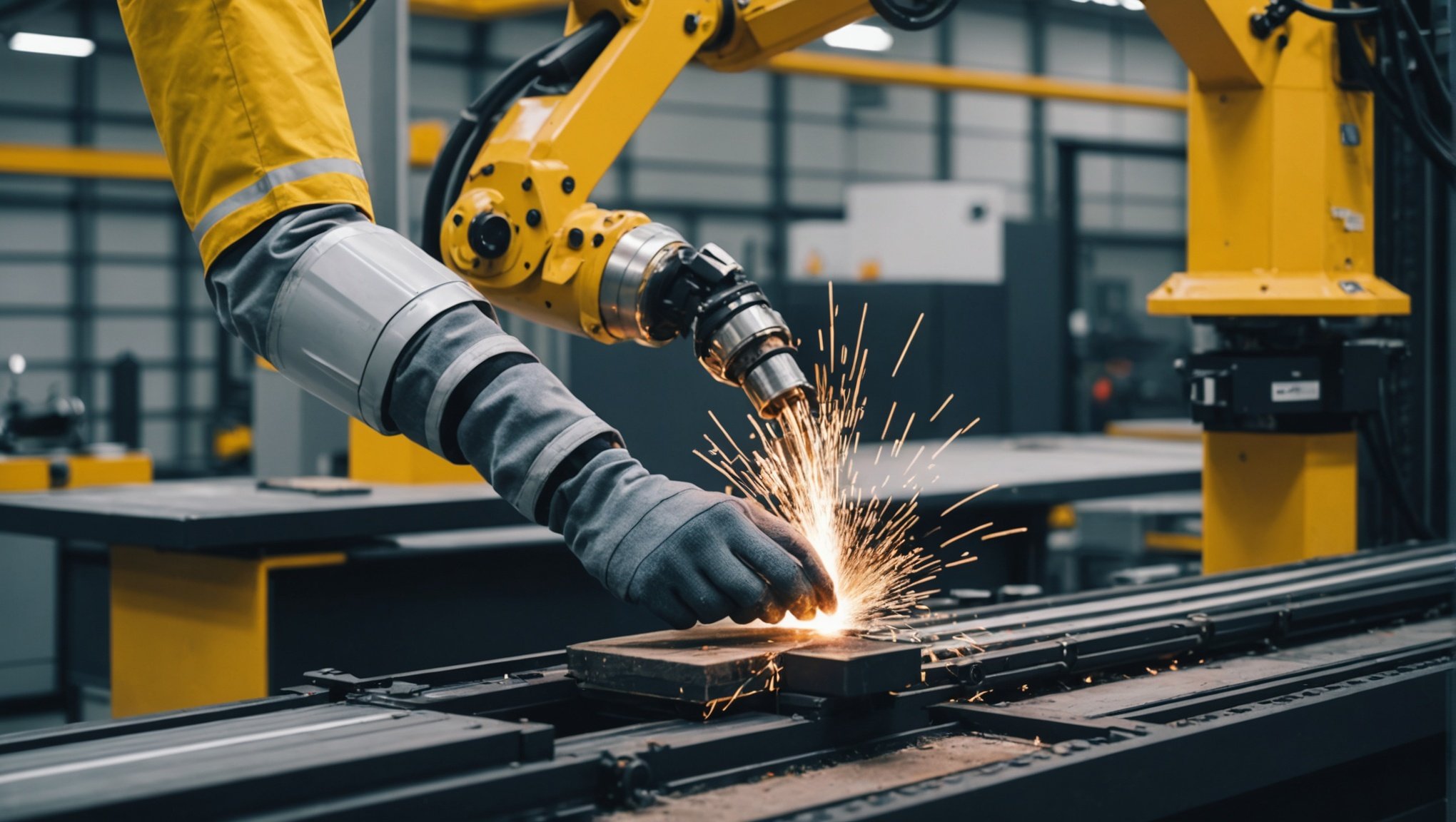The Fourth Industrial Revolution (4IR) is transforming UK manufacturing, offering innovative technologies that boost efficiency and productivity. This evolution presents both challenges and opportunities. Embracing automation, data analytics, and advanced robotics can streamline operations, reduce costs, and increase competitiveness. This guide explores practical strategies for UK manufacturers to adopt 4IR technologies effectively, ensuring they not only survive but thrive in a rapidly changing landscape. Discover how to unlock your manufacturing potential and navigate this dynamic technological shift.
Overview of 4IR Technologies in Manufacturing
The Fourth Industrial Revolution (4IR) represents a transformative era in manufacturing, characterized by the integration of advanced technologies into production processes. At its core, 4IR technologies encompass innovations such as the Internet of Things (IoT), artificial intelligence (AI), and robotics, which collectively enable smart manufacturing. These components work in synergy to create highly automated and interconnected production environments, where machines communicate with each other and make decisions with minimal human intervention.
In parallel : Enhancing Remote Learning in UK Schools: Innovative Uses of AR and VR Technology
In the UK manufacturing sector, there is a noticeable shift towards adopting these technologies to remain competitive on a global scale. Current trends indicate a growing emphasis on digitalization, with manufacturers investing in IoT devices and AI-driven analytics to enhance their operational capabilities. This transition not only boosts productivity but also allows for greater customization and flexibility in manufacturing processes.
The importance of 4IR technologies in manufacturing cannot be overstated. By leveraging smart manufacturing, companies can achieve significant improvements in operational efficiency. This includes reducing downtime through predictive maintenance, optimizing supply chain management, and minimizing waste. As such, the integration of 4IR technologies is pivotal for manufacturers aiming to streamline their operations and respond swiftly to market demands.
Additional reading : Unlocking Efficiency: AI and Machine Learning Strategies for Optimizing Route Planning in UK Logistics
Strategies for Implementing 4IR Technologies
Implementing 4IR technologies in manufacturing requires a strategic approach to ensure successful integration and maximize benefits. Here are some key strategies to consider:
Assessing Readiness for 4IR Adoption
Before leaping into digital transformation, it's crucial to assess your organization's readiness. This involves evaluating current capabilities, infrastructure, and workforce skills. Conduct a thorough analysis to identify gaps in technology and expertise. By understanding these areas, you can develop a tailored plan that addresses specific needs and aligns with business goals.
Integration of Automation and Robotics
Integrating automation and robotics into production lines is a cornerstone of 4IR implementation. Start by identifying repetitive tasks that can be automated to enhance efficiency and reduce human error. Robotics can handle complex operations with precision, allowing human workers to focus on more strategic roles. This shift not only increases productivity but also fosters a safer working environment.
Utilizing Data Analytics for Informed Decision-Making
Harnessing the power of data analytics is essential for informed decision-making. Implement systems that collect and analyze data from various sources, such as IoT devices and production equipment. This data provides valuable insights into operational performance, enabling proactive measures like predictive maintenance and optimized resource allocation. By leveraging data analytics, manufacturers can make smarter, data-driven decisions that enhance overall efficiency and competitiveness.
Case Studies of Successful 4IR Implementation
Exploring case studies of UK manufacturers reveals insightful examples of how industry leaders are successfully leveraging 4IR technologies. These companies have not only embraced innovation but have also redefined their operational landscapes, setting benchmarks for others in the sector.
Analysis of UK Manufacturers
One notable example is a leading automotive manufacturer that integrated IoT and AI to revolutionize its production processes. By deploying IoT sensors across its assembly lines, the company achieved real-time monitoring, drastically reducing equipment downtime. The use of AI-driven analytics further optimized their supply chain, enabling precise inventory management and just-in-time manufacturing.
Lessons Learned
These successful examples highlight several lessons from their implementation journeys. Firstly, a phased approach to adopting 4IR technologies proved crucial. By starting with pilot projects, these manufacturers were able to test and refine their strategies before full-scale deployment. Additionally, investing in workforce training ensured that employees were equipped with the necessary skills to operate and maintain new technologies, fostering a culture of continuous learning and adaptation.
Impact on Productivity and Competitiveness
The impact on productivity and competitiveness has been profound. Companies that have embraced 4IR technologies report significant increases in operational efficiency and product quality. The ability to quickly adapt to market changes and customer demands has given them a competitive edge. Furthermore, these advancements have led to a reduction in production costs, allowing for more competitive pricing in the global market. This transformation underscores the potential of 4IR technologies to drive growth and innovation in the manufacturing sector.
Benefits of Adopting 4IR Technologies
Adopting 4IR technologies in manufacturing brings a plethora of benefits, significantly transforming the industry landscape. These advancements lead to remarkable efficiency gains, cost reduction, and improved product quality, ultimately enhancing customer satisfaction.
Overview of Efficiency Improvements
The integration of 4IR technologies results in substantial efficiency improvements. By automating repetitive tasks and optimizing production processes, manufacturers can significantly reduce cycle times and boost output. This increased efficiency not only accelerates time-to-market but also allows businesses to respond swiftly to changing consumer demands. Moreover, the use of data analytics facilitates real-time monitoring and decision-making, ensuring that operations run smoothly and efficiently.
Long-term Cost Savings and Resource Management
One of the most compelling benefits of embracing 4IR technologies is the potential for long-term cost savings. Automation and predictive maintenance reduce the likelihood of equipment failure, minimizing downtime and repair costs. Additionally, IoT-enabled devices enhance resource management by providing insights into energy consumption and material usage. This data-driven approach enables manufacturers to optimize resource allocation, leading to significant cost reductions and a more sustainable operation.
Enhanced Product Quality and Customer Satisfaction
The adoption of 4IR technologies also contributes to enhanced product quality. Advanced robotics and AI-driven quality control systems ensure precision and consistency in manufacturing processes, resulting in higher-quality products. This improvement in quality not only meets but often exceeds customer expectations, fostering greater customer satisfaction and loyalty. Furthermore, the ability to customize products efficiently allows manufacturers to cater to diverse consumer preferences, further boosting customer engagement.
In summary, the benefits of adopting 4IR technologies in manufacturing are manifold, driving efficiency gains, cost reduction, and improved product quality, all of which contribute to enhanced customer satisfaction and competitive advantage.
Challenges in Implementing 4IR Technologies
Implementing 4IR technologies in manufacturing is not without its challenges. Manufacturers often encounter several barriers to adoption that can hinder progress and impact the workforce significantly.
Common Obstacles Faced by Manufacturers
One of the primary challenges is the high initial investment required for technology integration. The cost of acquiring and installing advanced systems can be prohibitive, particularly for small and medium-sized enterprises. Additionally, there is often resistance to change within organizations, as employees and management may be hesitant to alter established processes.
The Role of Workforce Retraining and Upskilling
The workforce impact of adopting 4IR technologies is significant, necessitating retraining and upskilling. As automation and robotics take over routine tasks, employees must adapt to new roles that require technical proficiency and problem-solving skills. Investing in comprehensive training programs is essential to equip the workforce with the necessary capabilities to operate and maintain new technologies effectively.
Addressing Cybersecurity and Data Privacy Concerns
With the increased connectivity and data exchange inherent in 4IR technologies, cybersecurity and data privacy become critical concerns. Manufacturers must implement robust security measures to protect sensitive information from cyber threats. This includes adopting encryption protocols, regular security audits, and establishing clear data governance policies. By addressing these concerns, companies can safeguard their operations and maintain customer trust.
Future Implications of 4IR for UK Manufacturers
The future trends in manufacturing, driven by the Fourth Industrial Revolution (4IR), promise to reshape the industry landscape significantly. As technologies continue to evolve, UK manufacturers must anticipate and adapt to these changes to remain competitive.
Predictions for Industry Evolution
The long-term impact of 4IR technologies will likely see manufacturing processes becoming increasingly automated and interconnected. With advancements in AI and IoT, factories could operate with higher efficiency and precision, leading to reduced production times and enhanced product quality. This evolution will necessitate a shift towards more flexible and adaptable production systems, allowing manufacturers to respond swiftly to market demands.
Role of Innovation and Continuous Improvement
Innovation will be at the heart of this transformation, driving continuous improvement across the sector. Manufacturers will need to foster a culture of innovation, encouraging research and development to harness new technologies effectively. This approach not only enhances operational efficiency but also opens up new avenues for product development and customization, catering to evolving consumer preferences.
Strategies for Staying Competitive
To thrive in this rapidly changing landscape, manufacturers must adopt strategies that prioritize agility and resilience. Investing in workforce upskilling and embracing digital transformation are crucial steps. By equipping employees with the necessary skills and integrating advanced technologies, companies can maintain a competitive edge. Additionally, building robust partnerships with technology providers and other stakeholders can facilitate knowledge sharing and collaborative innovation, further strengthening the industry's position in the global market.











